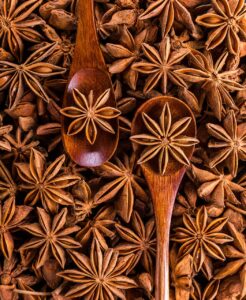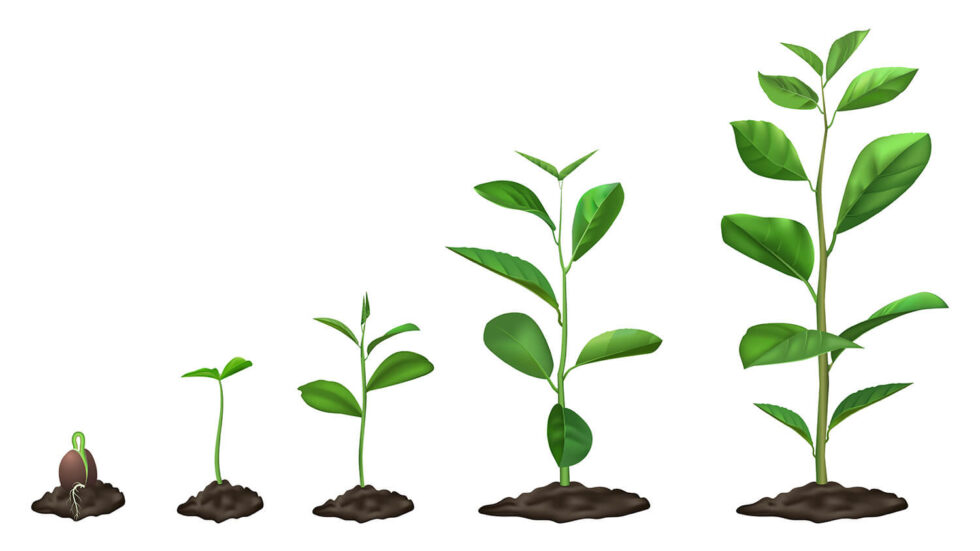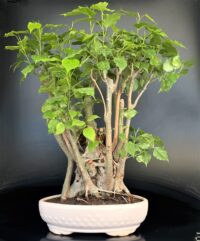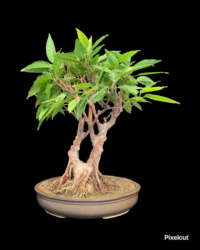Growing bonsai from seedling
GROWING BONSAI TREE FROM SEEDLINGS: A CHALLENGING YET REWARDING JOURNEY
Growing bonsai tree from scratch is a fulfilling endeavour that can test your patience and dedication. It may take years of hard work and commitment, but the result is a stunning and unique tree you have created with your hands. In this article, we will guide you through the process of growing a bonsai tree from seedlings, including tips, techniques, and everything else you need to know to successfully grow and cultivate a beautiful bonsai tree.
DO BONSAI TREE SEEDS REALLY EXIST?

Yes, bonsai tree seeds do exist. You can purchase them from nurseries or specialized online stores. However, growing a bonsai tree from a seed is a long and challenging process requiring much time and patience. If you’re a beginner, it’s recommended to start with a pre-grown bonsai or a young seedling.
BONSAI TREE SPECIES TO GROW FOR BEGINNERS
Several bonsai tree species are ideal for beginners, such as the Chinese elm, Japanese black pine, and Japanese maple. These species are hardy and easy in growing bonsai, making them perfect for those who are just starting with bonsai.
HOW LONG DOES IT TAKE TO GROW BONSAI FROM SEEDLINGS?

Growing bonsai from seedlings can take at least a decade or more, depending on the species and the techniques used. It’s a slow and gradual process that requires a lot of attention and care. However, if you’re patient and committed, the end result is an beautiful and unique tree that you can be proud of.
THE 5 STAGES OF GROWING BONSAI FROM SEED TO MATURE TREE
Growing Bonsai-Germination:
The first stage is to germinate the seeds or plant a young seedling in a pot. This stage can take up to several weeks to a month.
Growing Bonsai
Seedling stage: The seedling stage is when the tree starts to grow its leaves and branches. During this stage, it’s important to keep the tree in a controlled environment and prune it regularly.
Growing Bonsai
Pre-bonsai stage: This stage is when the tree starts to take shape and form. You can start to prune and shape the tree to fit the bonsai style you desire.

Growing Bonsai
Bonsai stage: The bonsai stage is when the tree has reached its desired shape and size. You can start to refine the tree and add finishing touches.

Growing Bonsai
Mature stage: The final stage is when the bonsai tree has reached its full potential and is a mature tree. At this stage, you can enjoy the beauty of your creation and continue to care for it.

TIPS WHEN BUYING OR COLLECTING TREE SEEDS OR SEEDLINGS FOR GROWING BONSAI
When buying or collecting tree seeds or seedlings for bonsai, choosing the right species and quality is important. Here are some tips to keep in mind:
- Research the species and its requirements before purchasing or collecting.
- Buy from reputable nurseries or specialized online stores.
- Choose healthy and robust seedlings or seeds.
- Be patient and allow the tree to grow and develop naturally.
Growing Bonsai:-
Existence of Bonsai Seeds:
When it comes to growing bonsai tree from scratch, it’s important to address a common misconception – the existence of bonsai seeds or seedlings. Despite what many non-enthusiasts believe, bonsai trees can actually be grown from various tree species that possess good tree-like qualities and can be trained to grow in small containers. While some shops and nurseries may sell “bonsai seeds,” it’s important to understand that these are simply regular tree seeds and not a specific type of seed meant for bonsai cultivation. So, before we delve into the specifics of growing a bonsai from a young seedling, let’s clear up this common misconception. “There is no such thing called BONSAI SEED”
How to Choose the Best Bonsai Tree Seed:
Bonsai trees are beautiful and unique plants that are well-loved by many gardeners and plant enthusiasts. But did you know that growing bonsai trees from seed is not only a fun and rewarding experience but also a cost-effective way to obtain your own beautiful bonsai? In this guide, we will cover everything you need to know about choosing the best bonsai tree seed and growing it successfully.
Types of Bonsai Trees
The first thing to consider when selecting a bonsai tree seed is the type of tree you want. Bonsai trees come in many different types, each with its own unique shape and characteristics. Some of the most popular types of bonsai trees include Juniper, Japanese maple, Chinese elm, and many more. Additionally, there are both indoor and outdoor variants, each with their own care requirements. Before choosing a bonsai tree seed, do your research and select a type that best fits your needs and preferences.
Growing Bonsai:-
Size

While all bonsai trees are small, there are different species with varying degrees of smallness. Certain types grow up to 4 inches, while others can grow up to 12 inches or more. Consider the space you have available for your bonsai tree and select a seed that will best fit in that space.
Growing Bonsai
Quality of Seeds

Choosing high-quality bonsai tree seeds is crucial to the success of your bonsai tree growing experience. Always purchase your seeds from a reliable and reputable vendor and ensure that the seeds have a disease-free certification. This will make caring for your bonsai tree much easier in the long run.
How to Grow a Bonsai Tree from a Seed
Once you have chosen your bonsai tree seed, it is time to start growing it. The process of growing a bonsai tree from a seed is relatively simple, but it does require patience and dedication. Here are the steps to follow:

Soften the hard outer layer of the seed by soaking it in water for approximately 24 to 48 hours. If you are using scarification, remove the outer shell before soaking.
Plant the softened seed in peat moss or another soft soil bedding.
Add water to the soil.
Place the seeds in a transparent plastic bag.
Put the bag in the refrigerator to lower the temperature. The length of time required may vary from one to six months.
Once the seeds sprout, remove them from the fridge and sow them in the soil.
Continue watering your bonsai tree regularly until it grows.
Growing bonsai tree from seed can be a fulfilling and rewarding experience for any gardener or plant enthusiast. By choosing the right bonsai tree seed and following the proper steps, you can grow your own beautiful and unique bonsai tree. Remember to consider the type of tree, size, and quality of seeds before starting, and be patient and dedicated throughout the process.
Happy growing bonsai!

Seeds vs. Seedlings

The Difference Between Bonsai Tree Seeds and Seedlings
If you’re interested in growing bonsai tree, one of the first things to consider is whether you should start from a seed or a seedling. While both have their advantages, understanding the differences between the two will help you decide which option is more suitable for you.
Tree Seeds: What You Need to Know
Seeds are the tiny, hard parts of a plant that contain an undeveloped embryo. They can be harvested from normal trees or plants in the fall and then either naturally or artificially germinated in the spring. Some seeds are collected once they fall, while others are harvested from fruits or open cones.
While growing bonsai from seed gives the grower complete control over the plant’s development, it is a more challenging process. Germinating seeds requires patience and knowledge, and not all seeds will successfully germinate.
Seed Germination Techniques: Stratification and Scarification
To successfully grow a bonsai from a seed, you need to learn the two main seed germination techniques: stratification and scarification.
Seed Stratification
Many seeds that fall during autumn are genetically programmed to become dormant in winter and germinate in early spring. To break this dormancy period, seeds need to undergo stratification. Stratification helps encourage seed germination by imitating the natural growing conditions of the plant, specifically the cold period.
Stratification is done by placing the seeds in a cold, moist environment for a long period, typically between 21 to 90 days, depending on the plant species. This technique mimics the winter conditions that seeds would naturally experience and stimulates them to sprout when they sense that the season has changed.
Seed Scarification
Scarification is a technique that helps speed up the germination process of hard, tough-shelled seeds. This method involves breaking a small part of the seed’s shell to allow water or moisture to pass through it. This process can be performed before stratification, and it ensures that the seed is ready to germinate once it undergoes stratification.
Seedlings: A More Practical Approach
Compared to growing a bonsai from a seed, starting from a seedling is a more practical and easier approach. A seedling is a young plant that has already started to grow and develop, and it can be purchased from a reputable nursery or bonsai supplier.
With a seedling, you can skip the challenging process of seed germination and move straight to nurturing and shaping the plant. This approach allows you to focus on the artistic aspects of bonsai cultivation, such as pruning, wiring, and styling.
Acquiring Tree Seeds or Seedlings for Growing Bonsai: Tips to Consider

If you’re interested in growing bonsai tree, one of the first things you’ll need to do is acquire the necessary seeds or seedlings. Here are some tips to help you acquire high-quality tree seeds or seedlings for bonsai:
- Choose the Right Species
The first step is to choose the right species of tree for your bonsai. Some trees are more suitable for bonsai cultivation than others. Make sure to research the different species of trees and their growth habits to find the best fit for your skills and environment.
- Buy from a Reputable Supplier

Once you’ve chosen the species, the next step is to purchase your tree seeds or seedlings from a reputable supplier. Look for a supplier that specializes in bonsai trees and has a good reputation in the industry. A reputable supplier can provide you with high-quality seeds or seedlings that will ensure the success of your bonsai project.
- Check for Freshness
When purchasing seeds, make sure to check for their freshness. Old seeds may not germinate, and the resulting seedlings may not be healthy. Check the packaging for the date of harvest and the expiration date. Make sure to choose seeds that are within their expiration date and have been stored properly to ensure their freshness.
- Inspect the Seedlings
If you’re buying seedlings, make sure to inspect them carefully before purchasing. Look for seedlings that have a healthy root system, sturdy stems, and a balanced shape. Avoid seedlings that have yellowing leaves or signs of disease or pests.
- Consider Local Nurseries or Garden Centers

Another option is to visit local nurseries or garden centers. This allows you to see the seedlings in person and choose the healthiest ones. Local nurseries may also be able to provide you with advice on the best species for your area and environment.
Acquiring high-quality tree seeds or seedlings is crucial for the success of your bonsai project. Make sure to choose the right species, purchase from a reputable supplier, check for freshness, inspect the seedlings carefully, and consider local nurseries or garden centers. With the right tree seeds or seedlings and proper care and cultivation, you can create a beautiful bonsai that will bring joy and beauty to your life for years to come.
Tips for Acquiring Tree Seeds or Seedlings for Growing Bonsai

Whether you’re planning to grow a bonsai tree from seed or a seedling, it’s important to choose the right type of plant and to acquire it from a reliable source. Here are some helpful tips to guide you:
Buying Bonsai Seeds:
- Avoid buying “bonsai seeds” as they are often just regular tree seeds that are sold at a higher price.
- Instead, purchase regular tree seeds from a reputable supplier to save costs.
- Look for seeds that are native to your area. They will likely have better adaptability and grow more successfully.
- For species that grow from pine cones, store the cones in a warm place to release the seeds between the scales.
- Collect seeds from local trees in the autumn and plant them in the same season to align with nature’s schedule.
Buying Bonsai Seedlings:
- Choose a fast-growing bonsai species to minimize the wait time for it to grow.
- Avoid buying “bonsai seedlings” and opt for regular nursery stock from a trusted garden center.
- Choose a seedling that is around three years old. This will give you more flexibility in shaping its branches and stems.
- Always inspect the seedling’s health and condition before purchasing. Check for any signs of pests, diseases, or deformities.
By following these tips, you’ll be able to acquire the best tree seeds or seedlings for your bonsai project and increase your chances of success. And if you’re looking for more guidance on bonsai tree care, check out our article on “Where to Find the Best Bonsai Trees for Sale?”
Scientific Process of Seed Germination
https://www.britannica.com/science/perennial#/media/1/231783/66034
Mastering the Art of Growing Bonsai Trees from Seedlings
A Comprehensive Guide to Misho Bonsai

Growing a bonsai from scratch is a rewarding and fulfilling experience for any grower. While it may take time, effort, and patience, the misho method allows you to have full control of your bonsai tree from its early stages. In this article, we’ll discuss the five stages of misho bonsai and guide you on how to grow a bonsai tree from seed or seedling.
Stage 1: Seed

If you want to start growing bonsai from seed, you must first germinate your purchased seeds out of season. This process involves stratification and scarification of seeds. Cold stratification is a common method to break seed dormancy, and it involves placing the seeds in a damp paper towel and storing it inside a sealed plastic bag in the refrigerator for several days.
Once the seeds have germinated, plant them into a small pot using peat moss or potting soil until they sprout. It may take up to 90 days to germinate the seeds depending on the species.
Stage 2: Seedling

Once your seeds have grown a few leaves and stem, they become seedlings. This is a sensitive stage of the plant as it’s sensitive to changing environments and climate conditions. During this stage, transfer your seedlings into separate pots to allow them to grow larger and better.
Using bonsai soil isn’t necessary during this stage. Instead, prioritize encouraging healthy growth by using regular potting soil as long as it receives direct sunlight and you keep its soil moist.
Stage 3: Pre-bonsai Age estimate: 3 to 5 years old

At this stage, your bonsai tree has already developed a woody trunk and branches. However, it still needs more time to develop a strong root system, so it’s essential to continue transferring it to larger pots to allow it to grow.
During this stage, you can start wiring and pruning the branches to guide the shape of the tree.
Stage 4: Bonsai Age estimate: 5 to 10 years old

Once your bonsai tree has a well-established root system and has undergone proper pruning and wiring, it’s time to transplant it into a bonsai pot. Bonsai pots are shallow and small, which helps control the growth of the tree’s roots and promotes the growth of the tree’s branches and leaves.
At this stage, it’s important to continue proper pruning, wiring, and fertilization to maintain the shape and health of the tree.
Stage 5: Mature, Well-established Bonsai Tree – 21+ Years Old

It takes several decades for one plant material to grow into a mature, well-established bonsai tree. Unless you buy an already mature plant, you’ll need to dedicate many years to achieve a classic-looking bonsai. The most popular and valued bonsai trees worldwide are passed down from generation to generation. They are trained and maintained for many decades non-stop to achieve a century-old appearance.
Best Bonsai Tree Species Recommendations
Now that you know what it takes to grow a bonsai from seedlings let me recommend some of the best tree species for bonsai art. Here are some plant materials that are good for beginner and intermediate bonsai growers:
Evergreen Tree Species
Evergreen trees have leaves year-round, making them perfect for indoor bonsai growing.
Ficus – a popular and easy-to-care-for species, it’s tolerant of low humidity and temperature changes. Spruce – great for outdoor bonsai growing, it’s a slow grower with an elegant appearance.
 Juniper – a hardy tree with a fantastic range of shapes and styles. Hinoki Cypress – with its delicate foliage and slow-growing habit, it’s perfect for outdoor bonsai growing. Japanese White Pine – a great species for creating the classic-looking bonsai tree, it’s slow-growing but has a long lifespan.
Juniper – a hardy tree with a fantastic range of shapes and styles. Hinoki Cypress – with its delicate foliage and slow-growing habit, it’s perfect for outdoor bonsai growing. Japanese White Pine – a great species for creating the classic-looking bonsai tree, it’s slow-growing but has a long lifespan.
Deciduous Tree Species
Deciduous trees shed their leaves in the fall, giving them a unique seasonal look.
Beech – an excellent species for creating a bonsai with a thick trunk and attractive bark. Ginkgo – with its fan-shaped leaves and yellow foliage in the fall, it’s perfect for outdoor bonsai growing. Redwood – a stunning species with attractive, flaky bark and a majestic appearance. Chinese Elm – a hardy species that can withstand various climates and soil conditions. Japanese Maple – with its delicate leaves and vibrant autumn color, it’s a popular choice for bonsai enthusiasts.
Flowering Tree Species
Flowering trees bloom with beautiful flowers in the spring, adding color and life to any bonsai collection.

Azalea – a stunning species with a wide range of flower colors and styles. Hibiscus – with its exotic flowers, it’s a great species for creating unique and colorful bonsai trees. Wisteria – a popular choice for creating cascading bonsai trees with its gorgeous purple flowers. Bougainvillea – with its vibrant and long-lasting flowers, it’s a popular species for bonsai enthusiasts. Japanese Apricot – with its pink flowers that bloom in early spring, it’s a perfect species for indoor bonsai growing.
Featured Plants
Lorem ipsum dolor sit amet, consectetur adipiscing elit.
Our Motto
What you see is what you get
Delivery
Personalised delivery at door step
Mission
Creating green spaces

For any Specific Query to this Article Pl mention the Name of Article and whatsapp your questions to 9999788064
You can put down your comments in comments Box
or email us at delhi.bonsai@gmail.com









